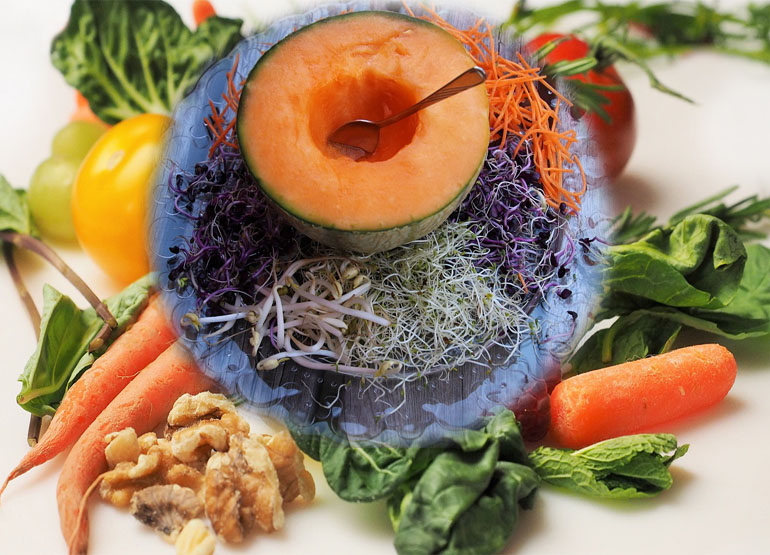FAT TIPS
Choose leaner meat, poultry and fish. Trim excess fat from meat and remove skin from poultry. Buy canned fish packed in water instead of oil and reduced-fat deli meats, lean ham or turkey.
Have chips, crackers, cookies, croissants, doughnuts and other baked goods and deep-fat fried foods which contain hydrogenated vegetable oils less often.
Try lower-fat ways of cooking foods such as baking, broiling, microwaving or using a non-stick frying pan.
Enjoy vegetables without adding extra fat such as butter, margarine, cream sauces or salad dressing.
Choose lower-fat foods from each of the four food groups more often. Try skim or 1% milk, low-fat yogurt, or cottage cheese and lower-fat cheeses (less than 15% Milk Fat).
Try to reduce the largest source of fat in your diet. The largest source of fat is the fat we add to our foods, e.g., butter or margarine on toast or vegetables, cream sauces on pasta, dressings on salads, mayonnaise, fat used for frying etc.
Avoid foods high in trans fatty acids like partially hydrogenated vegetable oils (such as many hard margarines, shortenings, commercially fried foods and some bakery goods) because they tend to raise blood cholesterol.
When buying prepared food, always check the Nutrition Facts Label and try to choose foods that are lower in saturated fat and cholesterol.
FIBRE TIPS
Regularly eating a certain kind of fibre, called "soluble," can improve your health and help bring blood cholesterol down. Fibre is found only in foods of vegetable origin, like whole grains, vegetables, fruits and legumes.
Soluble fiber is found mainly in: legumes (chick peas, kidney beans, lentils, etc.); green vegetables (the darker the color of the vegetable, the higher the fiber content); fruits and vegetables rich in pectin (tomatoes, apples, oranges, strawberries, etc); cereals with psyllium; oat bran and oatmeal.
Make meatless meals based on hearty grains, vegetables and beans, peas or lentils. Also have baked beans, lentils, chickpeas, kidney beans or pinto beans more often.
Increase your fiber intake by choosing whole grain breads instead of white breads, brown rice instead of white rice, and whole fruits instead of juices. Also when baking, choose high-fiber flours that will add extra fiber and nutrition to your baked goods.
Choose a variety of whole-grain breads and cereals made with wheat, oats or rye.
Eat more vegetables such as green peas, potatoes (with skin), corn, carrots, broccoli, tomatoes and dark yellow squash.
Eating nonstarchy vegetables before a meal is a good strategy for eating more fiber, increase nutrients and lower calories in your diet.
If you need to satisfy your "sweet tooth", avoid sugary food and try to enjoy a variety of fruit including apples, peches, dried apricots, berries, pears, prunes, kiwis, raisins, grapefruits, and oranges.



